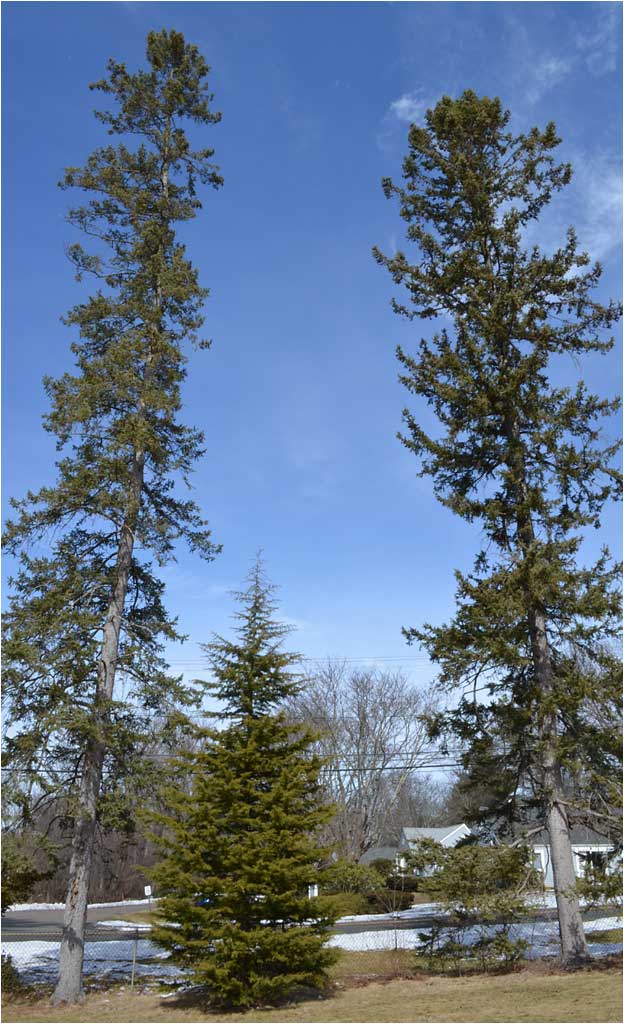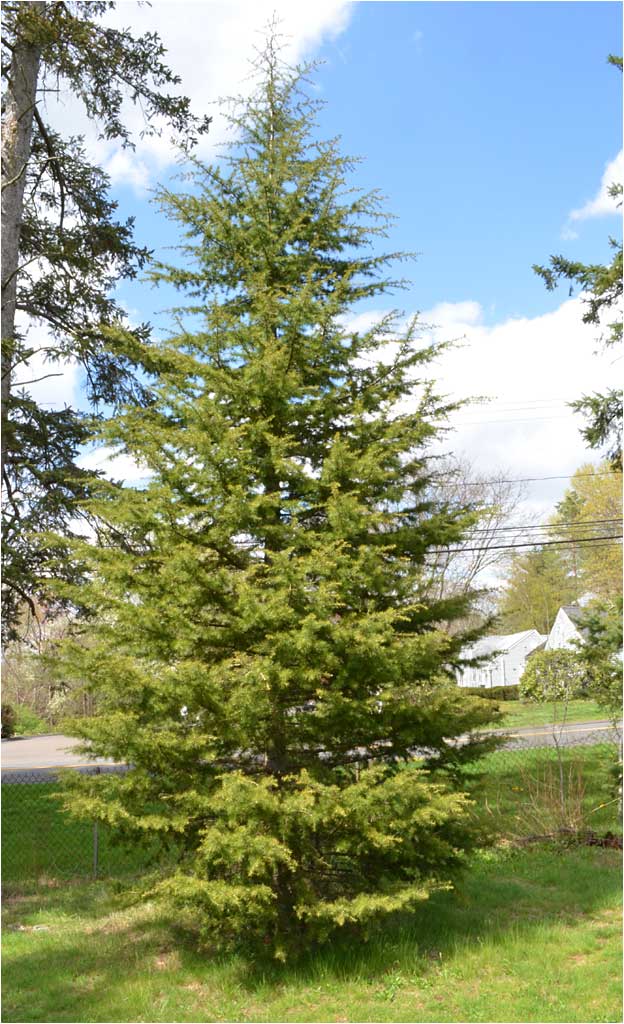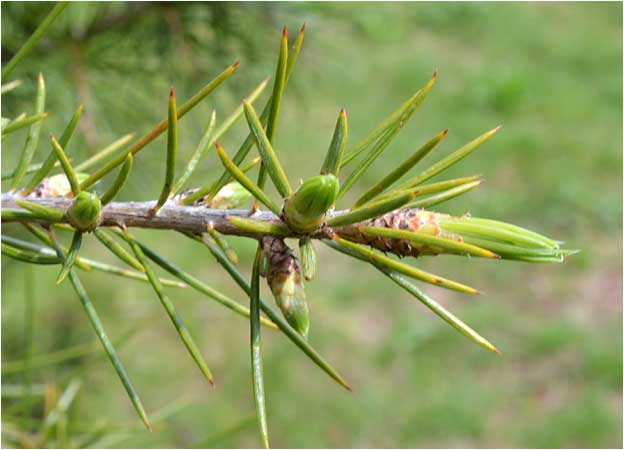58. CEDAR OF LEBANON
Cedrus libani

Nestled between two towering White Spruce trees is the Cedar of Lebanon. Park Naturalist Douglas Jackson planted two trees in 2012 and both are thriving (ed note: the other is planted by the Cabin). These are the only true "cedar" trees in the Arboretum, and historically the tree was only found in the mountains of Lebanon. Like most conifers, they are monecious (M/F cones on the same tree) with an important difference to other conifers. They bloom in late Fall, not Spring.
4 SEASON EVERGREEN

Cedar of Lebanon is a conifer (evergreen) and maintains its needles all year long. It does change color slightly in certain seasons, lighter in Winter and darker in Summer. The tree is drought tolerant and known for its longevity - up to 600 years. It is not a fast growing tree, a trait shared by many of the trees which produce outstanding wood. The wood of the Cedar of Lebanon has been prized since the time of the Phoenicians (4,500 BCE).
NEW GROWTH

New growth is accomplished both at the terminal bud (right) and along the lateral stems. The needles are set in stout pegs which make them resemble larches. The needles are quite fragrant - befitting a tree whose oil has been used in fragrances for thousands of years.
FOLIAGE

The lighter needles (right) are new annual growth while the darker green needles (left) are the needles which have stayed on the tree over the Winter. Needles typically stay on the tree for 3 - 5 years.